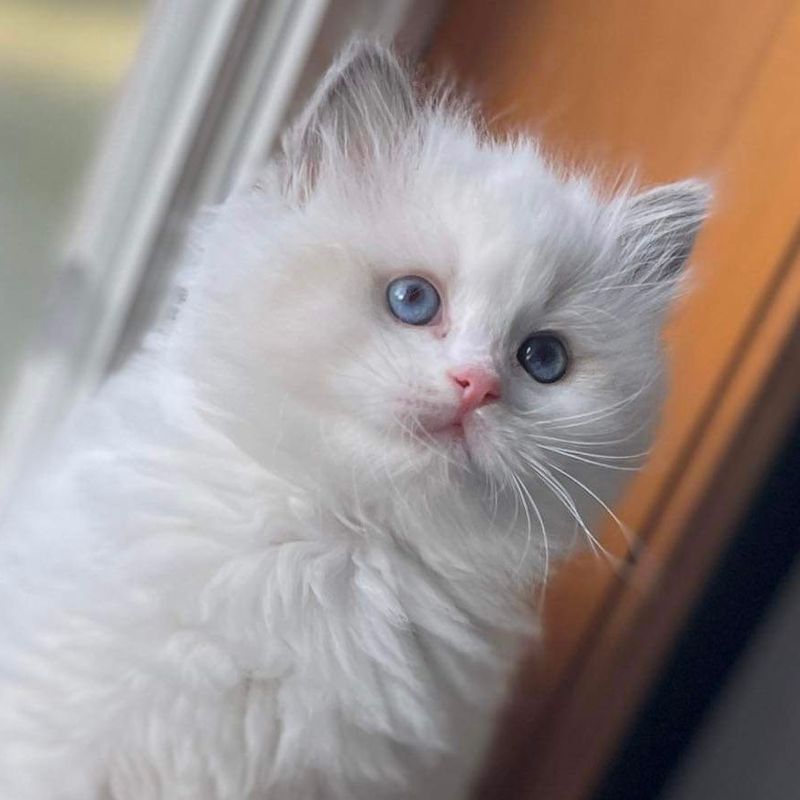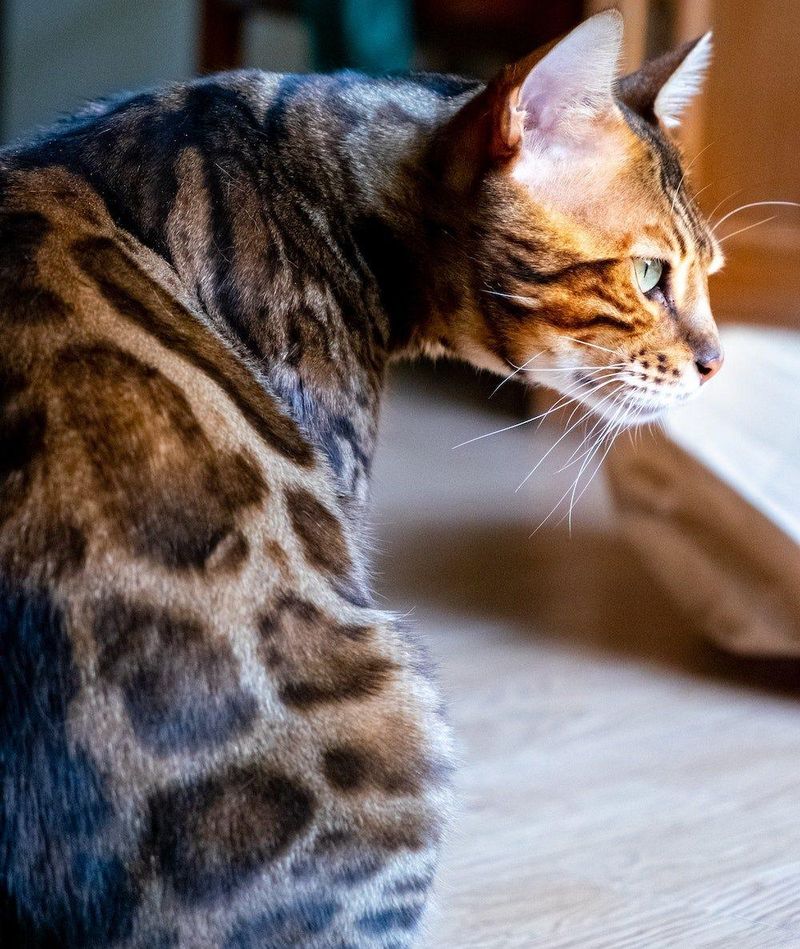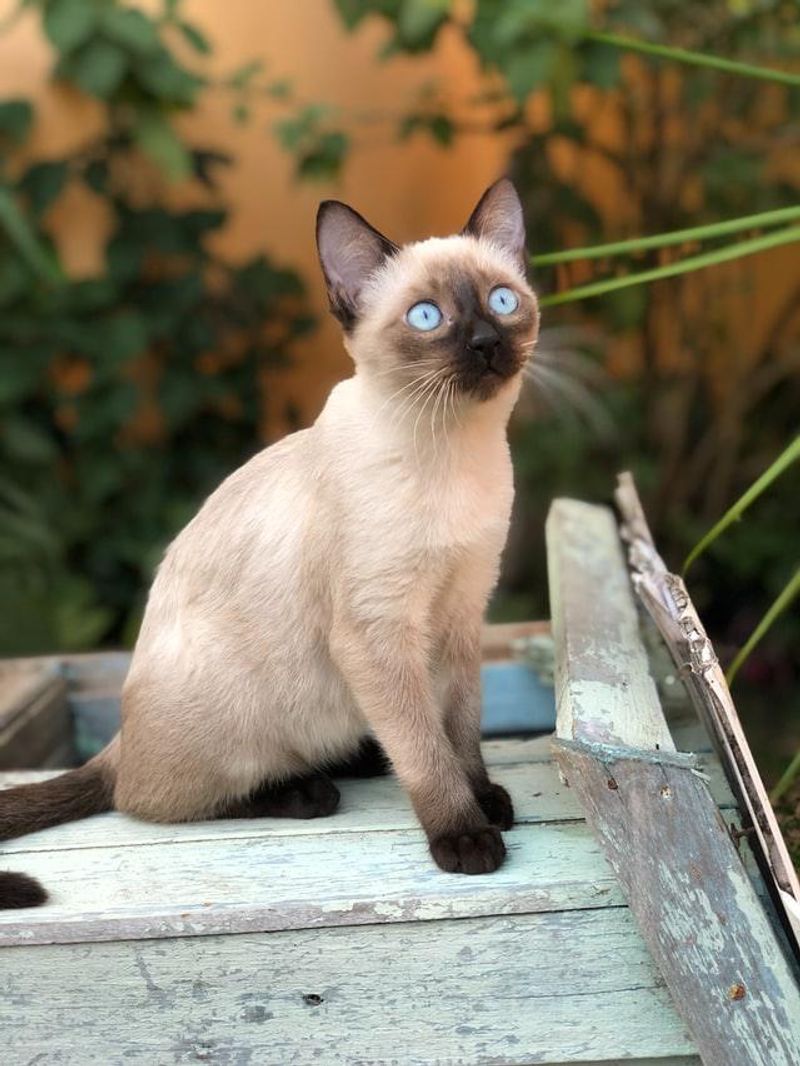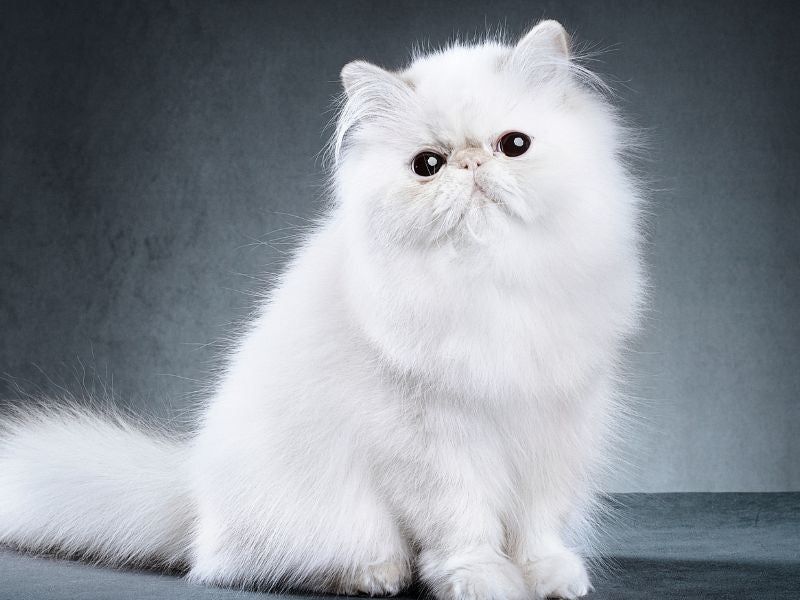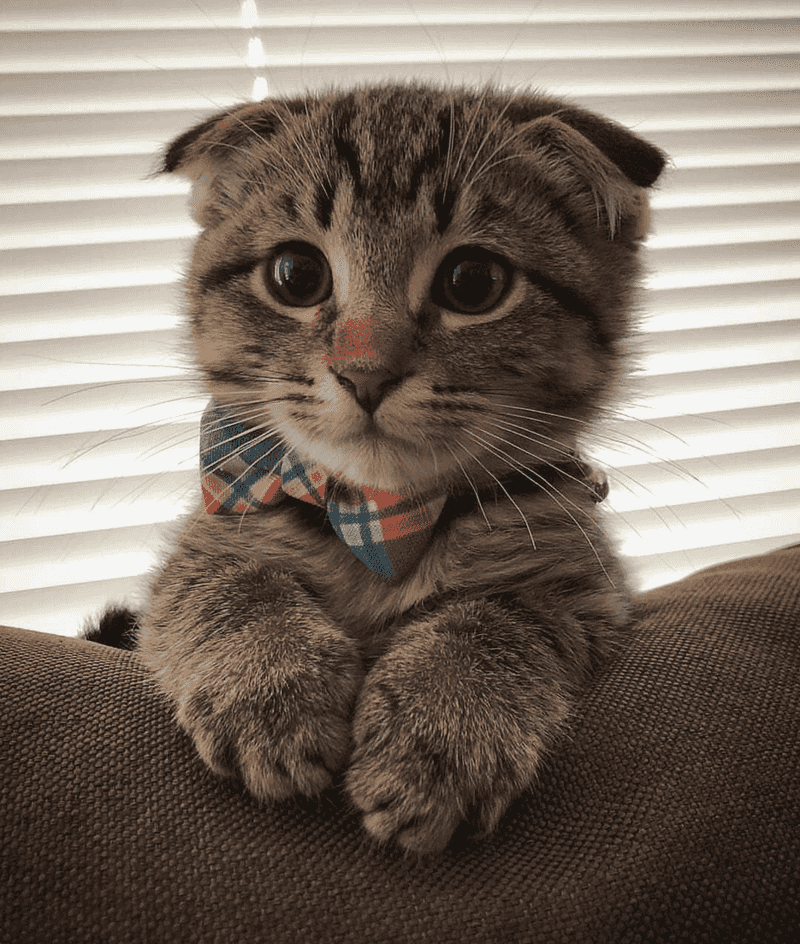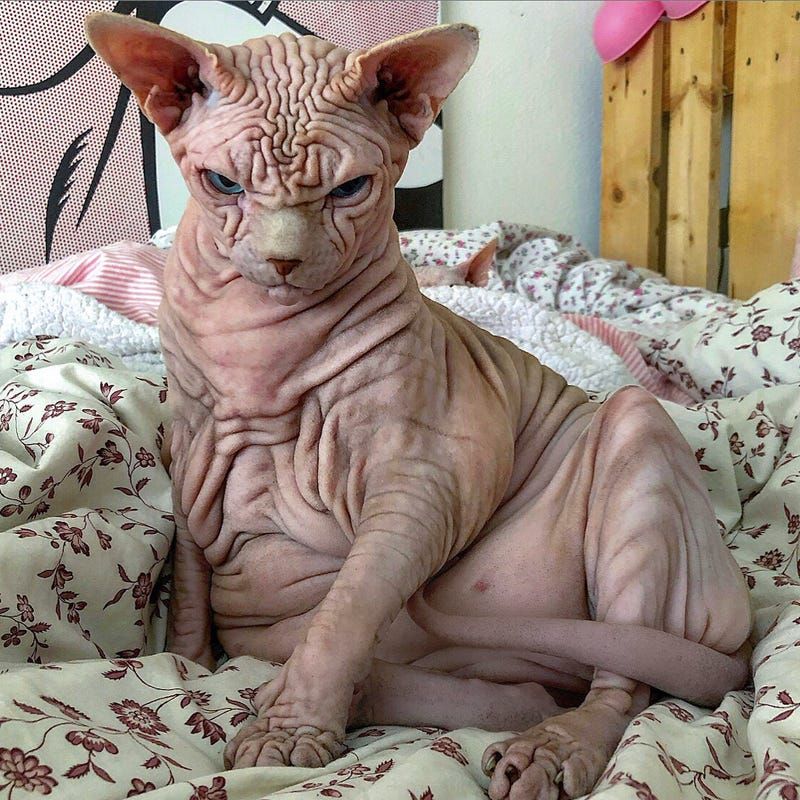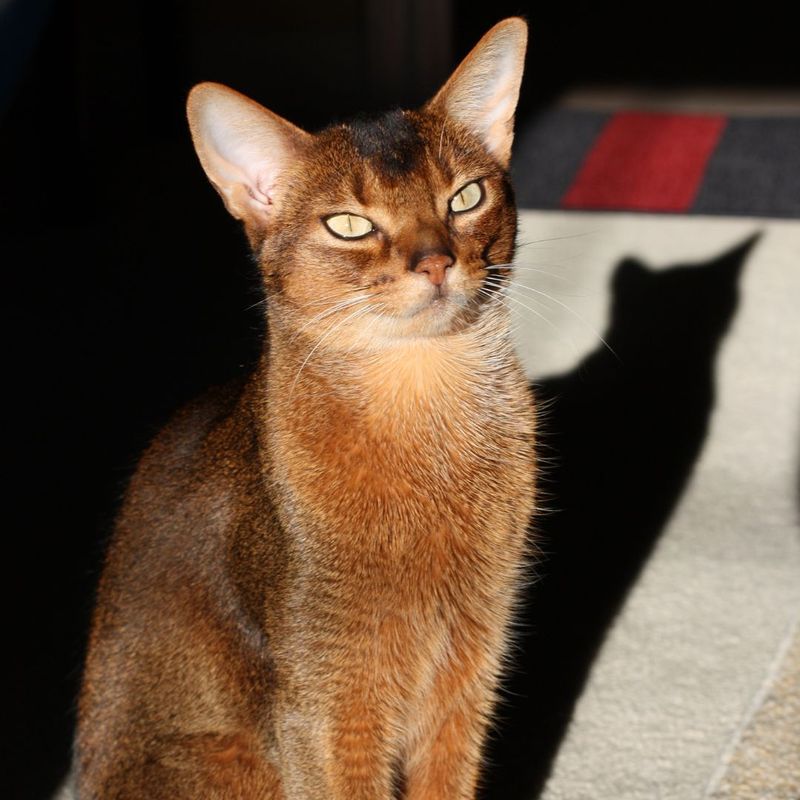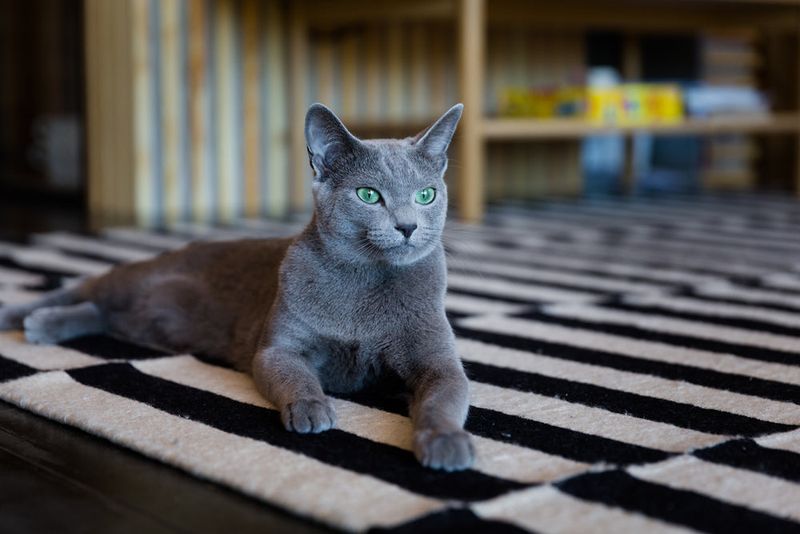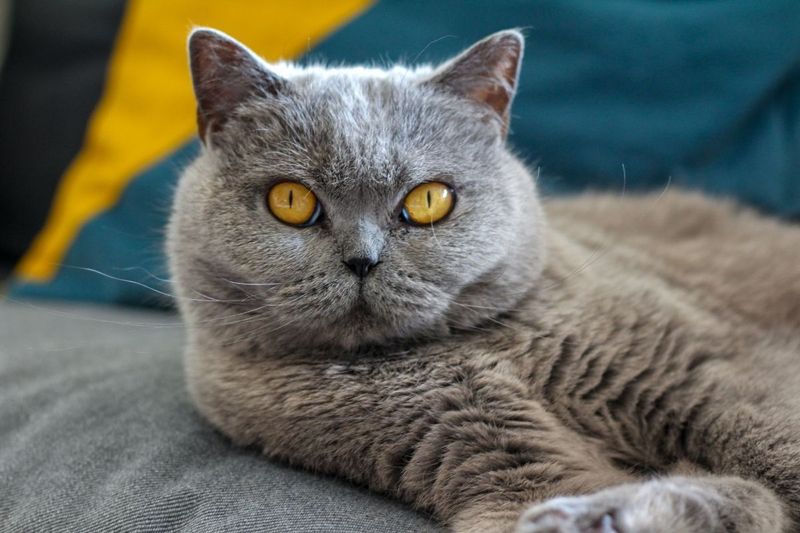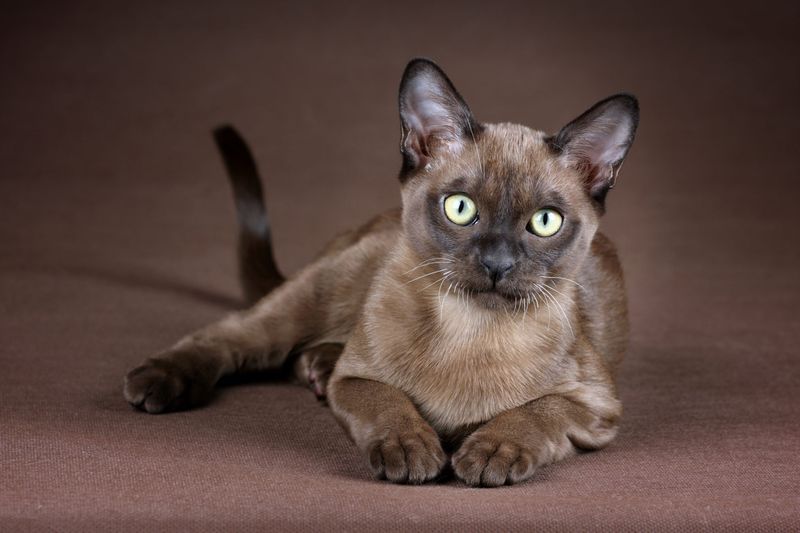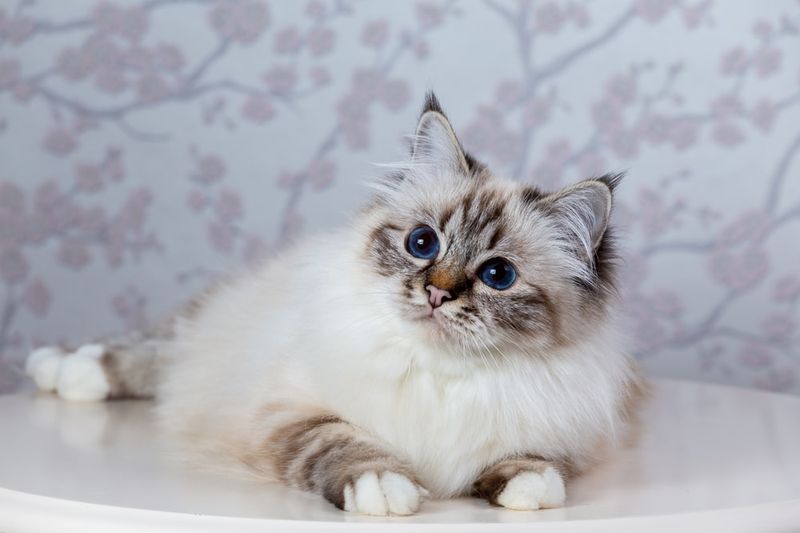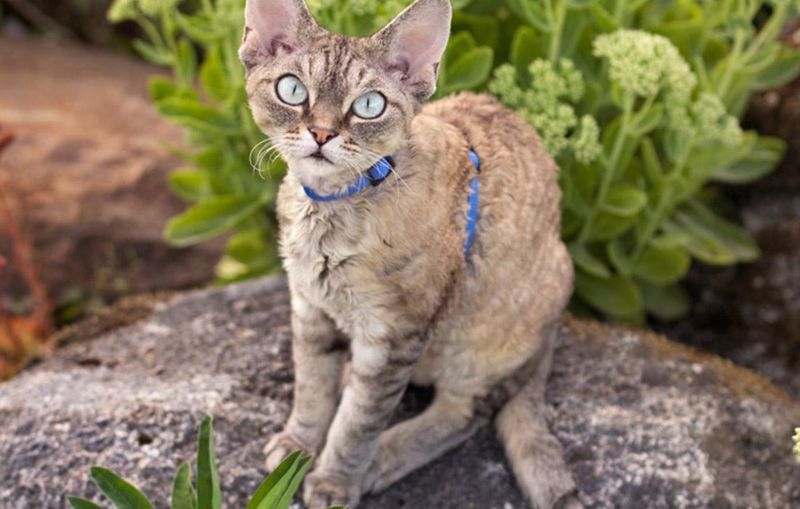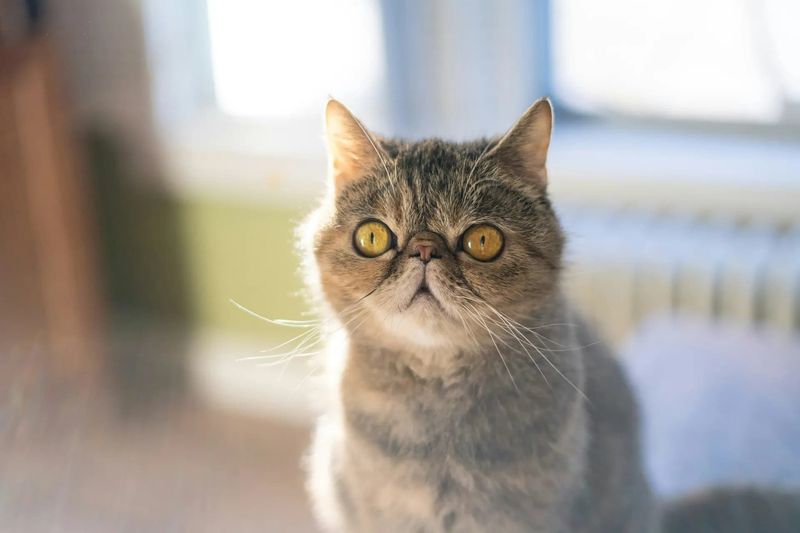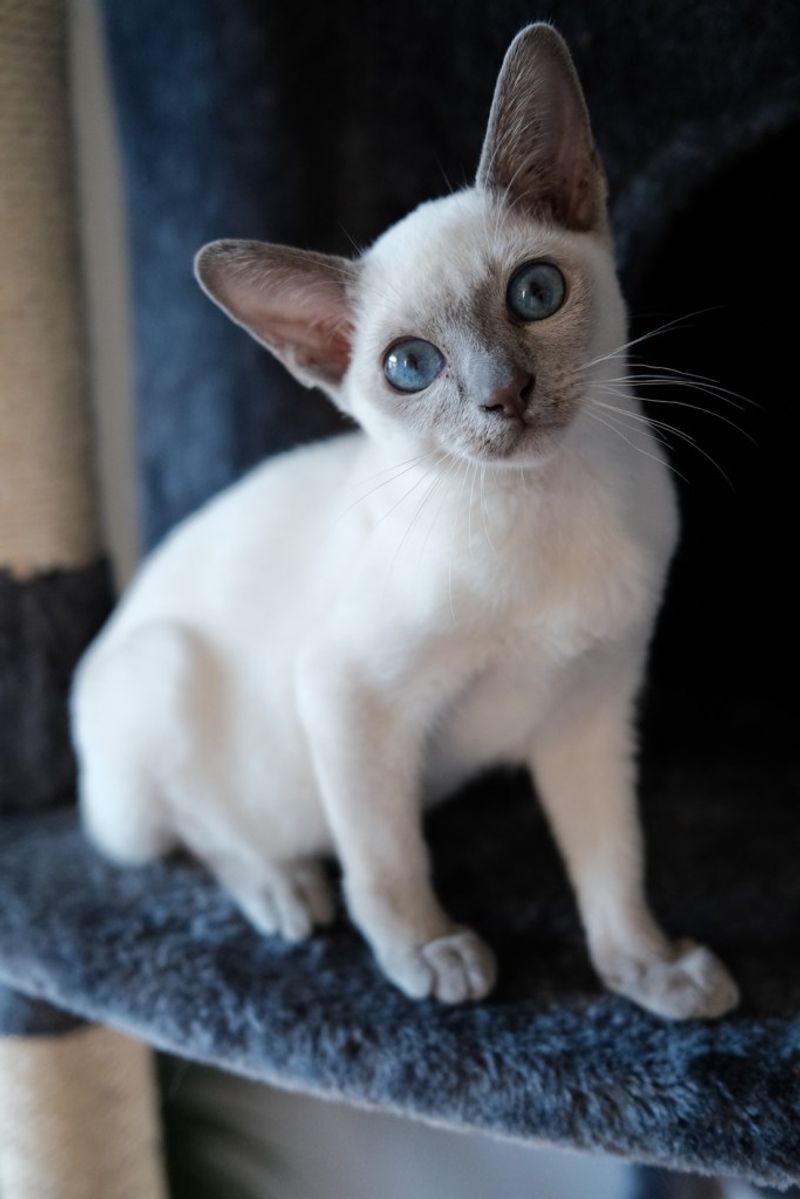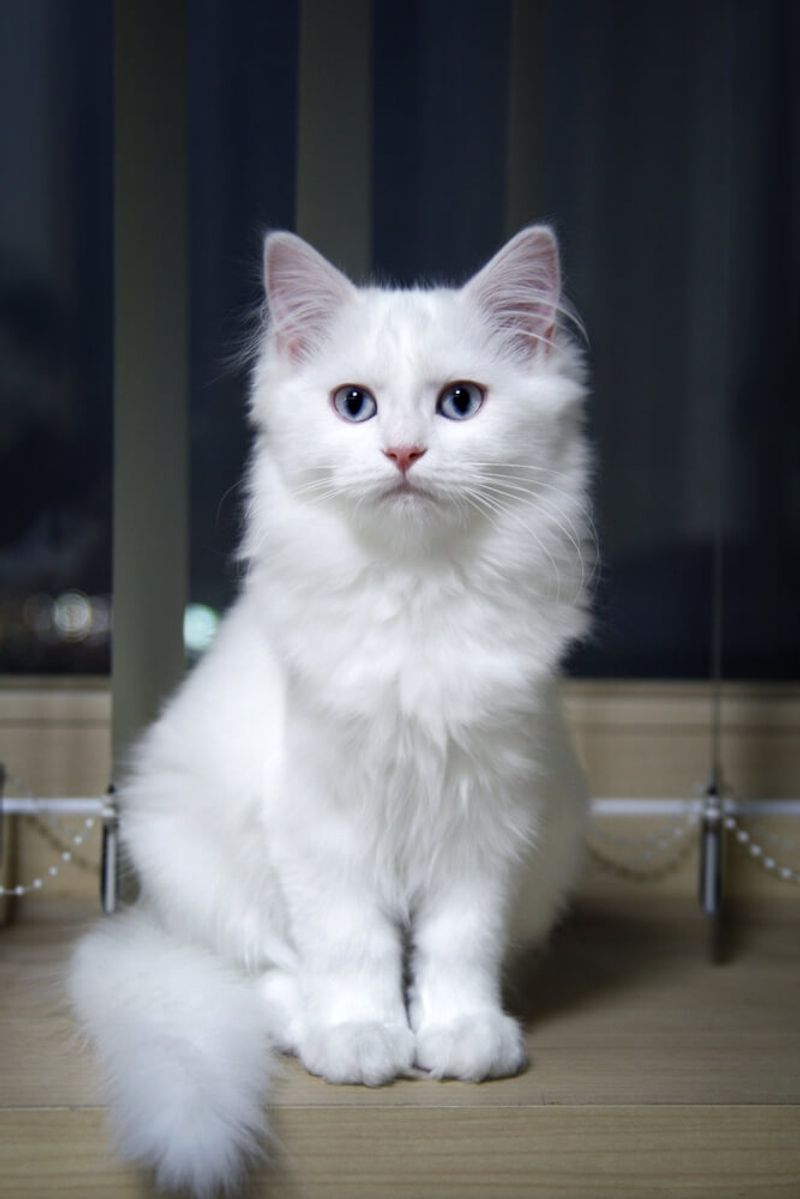📖 Table of Content:
- 1. Maine Coon
- 2. Ragdoll
- 3. Bengal
- 4. Siamese
- 5. Persian
- 6. Scottish Fold
- 7. Sphynx
- 8. Abyssinian
- 9. Russian Blue
- 10. British Shorthair
- 11. Norwegian Forest Cat
- 12. Burmese
- 13. Birman
- 14. Cornish Rex
- 15. Devon Rex
- 16. Exotic Shorthair
- 17. Tonkinese
- 18. Turkish Angora
- 19. Savannah
- 20. American Shorthair
Cats are beloved for their charm, elegance, and individuality. With a wide variety of temperaments, sizes, and appearances, they offer something for every kind of household. Whether calm and cuddly or curious and energetic, each breed brings its own kind of magic.
Some cats thrive in quiet spaces, while others enjoy active environments filled with stimulation. Certain breeds form deep bonds quickly, while others prefer a slow, steady approach to companionship. Understanding these traits helps create lasting harmony between the cat and the owner.
Across the world, certain breeds have earned admiration for their beauty, intelligence, and affectionate nature. From striking coat patterns to standout personalities, these felines have made a lasting impression. Each one reflects the rich diversity found within the feline world.
1. Maine Coon
Gentle giants of the cat world, Maine Coons are known for their impressive size and tufted ears. Adult males can weigh up to 18 pounds, making them one of the largest domestic cat breeds.
Their water-resistant shaggy coat and bushy tail help them survive harsh winters. Despite their wild appearance, Maine Coons are incredibly friendly and get along well with children and other pets.
These intelligent cats often learn tricks and can be taught to walk on a leash. Their playful personality stays kitten-like well into adulthood, and many Maine Coons enjoy playing fetch and solving puzzle toys.
2. Ragdoll
Famous for going limp like a ragdoll when picked up, these blue-eyed beauties live up to their name. Their relaxed temperament makes them ideal companions for busy households and apartment living.
Ragdolls develop slowly, taking up to four years to reach full maturity and size. Their semi-long fur feels like silk to the touch yet requires minimal grooming compared to other long-haired breeds.
Loyalty defines these cats—they’ll follow their favorite humans from room to room like shadows. Many Ragdoll owners describe them as dog-like in their devotion, greeting family members at the door and responding to their names.
3. Bengal
Wild-looking but domestically sweet, Bengals showcase spotted or marbled coats that glitter in the light. Their distinctive markings come from their Asian leopard cat ancestry, giving them an exotic appearance unlike any other house cat.
Energy radiates from these athletic felines who love climbing, jumping, and exploring their surroundings. Many Bengals enjoy water and might join you for a shower or play in sinks.
Mental stimulation is crucial for these intelligent cats. Without proper enrichment, they may become bored and develop mischievous habits. Puzzle feeders, interactive toys, and tall cat trees help keep their active minds and bodies properly engaged.
4. Siamese
Vocal and opinionated, Siamese cats never let you forget they’re in the room. Their distinctive color points (darker ears, face, paws, and tail) develop due to temperature-sensitive genes that create darker fur on cooler body parts.
Striking blue almond-shaped eyes peer from wedge-shaped heads, making these cats instantly recognizable. Siamese form deep bonds with their humans and can become depressed if left alone too long.
History surrounds these ancient cats, once treasured by Siamese royalty in Thailand. Legend says they were temple guardians and royal companions. Today, they maintain their regal bearing while demanding attention and affection from their chosen people.
5. Persian
Luxurious coats and sweet faces make Persians one of the most recognizable cat breeds worldwide. Their flat faces and round eyes give them a perpetually surprised expression that cat lovers find irresistible.
Calm and dignified, these cats prefer lounging on soft surfaces to racing around the house. They thrive in quiet environments where they can be admired and pampered like the royalty they believe themselves to be.
Daily grooming sessions are necessary to keep their thick double coats free from mats and tangles. While demanding in terms of maintenance, many owners find the grooming ritual strengthens their bond with these affectionate, low-energy companions.
6. Scottish Fold
Adorable folded ears give Scottish Folds their distinctive owl-like appearance. Not all kittens develop folded ears—about half inherit the dominant gene that causes cartilage to fold forward and downward.
Beneath that unique look lies a sweet-tempered, adaptable cat who gets along with everyone. These medium-sized felines enjoy interactive play but aren’t overly demanding of attention or exercise.
Scottish Folds often sit in the “Buddha position” with their legs stretched out and paws on their belly. They’re also known for sleeping on their backs with paws in the air. These quirky behaviors, combined with their expressive round eyes, make them endlessly photogenic companions.
7. Sphynx
Hairless wonders with big personalities, Sphynx cats break the stereotype that cats are aloof. Their lack of fur makes their warm, suede-like skin seek out heat sources—often their human companions’ laps or shoulders.
Wrinkled faces and large ears give these cats an almost alien appearance. Despite looking delicate, they’re surprisingly robust and athletic, known for their playful antics and acrobatic abilities.
Weekly baths are necessary since they have no fur to absorb natural oils. Their higher metabolism means they eat more than most cats to maintain body heat. Devoted and attention-seeking, Sphynx cats form strong bonds with their families and often perform “tricks” to entertain their humans.
8. Abyssinian
Active and athletic, Abyssinians rarely sit still long enough for extended cuddling sessions. Their ticked coat—where each hair has bands of color—creates a distinctive shimmering effect that resembles wild cats from Africa.
Curiosity drives these intelligent felines to investigate every corner of their home. They excel at finding the highest perch in any room, from which they can survey their domain with alert, almond-shaped eyes.
Social by nature, Abyssinians prefer being where the action is rather than hiding away. They form strong bonds with their families but maintain an independent streak. These cats thrive with interactive toys, puzzle feeders, and climbing opportunities to channel their boundless energy.
9. Russian Blue
Plush double coats in shimmering blue-gray make Russian Blues stand out in the cat world. Their dense fur stands out from their body, creating a soft, plush appearance that invites touching.
Shy around strangers but devoted to their families, these cats take time to warm up to new people. Once bonded, they show affection through gentle headbutts and quiet purring rather than demanding attention.
Intelligence shines through their bright green eyes. Russian Blues learn routines quickly and can open doors and cabinets with ease. They’re also known for their sensitive nature—they can pick up on their owners’ emotions and offer comfort during difficult times.
10. British Shorthair
Round faces with chubby cheeks give British Shorthairs their teddy bear appearance. The most famous coat color is blue (gray), but these sturdy cats come in many colors and patterns.
Reserved yet affectionate, they prefer sitting beside you rather than on your lap. Their independent nature makes them ideal for busy households—they’re content to entertain themselves while you’re away but welcome interaction when you’re home.
British Shorthairs age gracefully, often living into their late teens. Their dense, crisp coat requires minimal grooming, making them low-maintenance companions. Calm and dignified, these cats rarely get into trouble and adapt well to apartment living.
11. Norwegian Forest Cat
Built for harsh Scandinavian winters, Norwegian Forest Cats boast thick, water-resistant double coats and tufted paws that once helped them climb snowy mountains. Their sturdy bodies and bushy tails reflect their working cat heritage.
Patience defines these gentle giants, making them excellent companions for families with children. They’re content to wait for attention rather than demanding it, and they rarely use their voices except for soft chirps and trills.
Skilled hunters by nature, these cats need interactive play to satisfy their instincts. Despite their wild appearance, they’re affectionate and form strong bonds with their humans while maintaining healthy independence. Their impressive climbing abilities make tall cat trees a must-have.
12. Burmese
Surprisingly heavy for their size, Burmese cats feel like “bricks wrapped in silk” when picked up. Their short, glossy coats come in several colors, with traditional sable (dark brown) being the most recognized.
Affection overflows from these social butterflies who crave human interaction. They’ll follow you everywhere, help with household chores, and insist on being part of family activities.
Playfulness continues throughout their lives, with many Burmese enjoying fetch games well into old age. Their intelligence makes them quick learners who can master tricks and even walk on leashes. These cats form such strong bonds with their humans that they’re often described as “velcro cats.”
13. Birman
Mysterious origins surround Birmans, often called “Sacred Cats of Burma.” Their most distinctive feature is their four white paws, called “gloves,” which contrast beautifully with their colorpoint markings.
Balance defines these medium-sized cats—they’re playful but not hyperactive, affectionate but not clingy, vocal but not loud. Their silky coat lacks the dense undercoat of other longhaired breeds, making grooming surprisingly manageable.
Patience shines through in their interactions with children and other pets. Legend claims these cats were temple companions to Buddhist monks, and they seem to have inherited a peaceful, meditative quality. Their deep blue eyes often appear contemplative, as though they’re pondering ancient secrets.
14. Cornish Rex
Wavy, downy soft coats make Cornish Rex cats feel like warm suede to the touch. Unlike other cats with three types of hair, they only have the soft undercoat, creating their distinctive curly appearance.
Mischief follows these energetic cats who remain kitten-like well into old age. Their slender bodies, large ears, and egg-shaped heads give them an elegant, almost alien appearance that turns heads.
Warmth-seeking by nature, these cats will find the coziest spot in your home—often under blankets, on sunny windowsills, or curled against your neck. Their higher body temperature makes them living heating pads. Athletic and agile, Cornish Rex cats can perform impressive jumps and acrobatic feats from their powerful hind legs.
15. Devon Rex
Elfin faces with large eyes and ears give Devon Rex cats their impish, pixie-like appearance. Their wavy coat is even softer and more sparse than their Cornish Rex cousins, sometimes appearing almost moth-eaten in patches.
Comedians of the cat world, these felines seem to understand what makes humans laugh. They’ll perform silly antics, perch on shoulders like parrots, and insert themselves into whatever activity you’re doing.
Loyalty runs deep in these social cats who form strong bonds with their families. They don’t do well with long periods alone and thrive in households where someone is usually home. Their minimal shedding makes them a good choice for some allergy sufferers, though no cat is truly hypoallergenic.
16. Exotic Shorthair
Persian looks with easier maintenance define the Exotic Shorthair, often called “the lazy person’s Persian.” Their plush, dense coat requires weekly rather than daily grooming while still giving them that teddy bear appearance.
Sweet expressions come from their flat faces, round eyes, and short noses. While they share the Persian’s laid-back temperament, Exotics tend to be slightly more playful and curious about their surroundings.
Quiet companionship is what these cats offer, with soft voices they use sparingly. They form strong bonds with their families but aren’t typically demanding of attention. These easygoing felines adapt well to apartment living and households with respectful children.
17. Tonkinese
Blending the best of Siamese and Burmese breeds, Tonkinese cats offer a perfect middle ground between these two popular breeds. Their medium-sized, muscular bodies feel surprisingly heavy when picked up.
Sociability defines these interactive cats who want to be involved in everything. They’ll greet visitors, supervise household chores, and help you read by sitting directly on your book.
Aqua eyes—a unique color between blue and green—are the hallmark of the breed, particularly in the mink coat pattern. Tonkinese come in four coat patterns and multiple colors, all with short, silky fur that requires minimal grooming. Their moderate voice is more melodious than the Siamese but more frequent than the Burmese.
18. Turkish Angora
Elegance personified, Turkish Angoras move with ballerina-like grace on their fine-boned frames. Their silky, medium-length coat flows with their body without the thickness of Persian fur, making it surprisingly easy to maintain.
Intelligence and determination make these cats master problem-solvers. Once they set their mind to something, they rarely give up until they’ve achieved their goal—whether opening a closed door or winning over the most dedicated “dog person.”
Swimming comes naturally to many Turkish Angoras, unlike most cats who avoid water. This unusual trait dates back to their origins near Lake Van in Turkey. Though traditionally white with odd eyes (one blue, one amber), these cats now come in many colors and patterns.
19. Savannah
Wild heritage gives Savannahs their exotic spotted coats and extraordinary size. Created by crossing domestic cats with African servals, these cats maintain wild appearances while developing domestic temperaments.
Athletic abilities surpass most cats—Savannahs can jump up to 8 feet high from a standing position. Their long legs, large ears, and distinctive spots make them look like miniature cheetahs roaming your living room.
Adventure calls to these curious, high-energy cats who need substantial environmental enrichment. They enjoy walking on leashes, playing fetch, and even learning to swim. Savannahs form strong bonds with their families but may remain wary of strangers, a remnant of their wild ancestry.
20. American Shorthair
Working cat heritage gives American Shorthairs their sturdy build and excellent hunting skills. Descendants of cats who crossed the Atlantic on the Mayflower, these felines were valued for protecting grain stores from rodents.
Balance defines these cats—they’re playful but not hyperactive, affectionate but not demanding, social but independent. Their adaptable nature makes them fit well into most households, from quiet singles to busy families.
Longevity is a hallmark of the breed, with many living into their late teens or early twenties. Their medium-length, dense coat comes in over 80 colors and patterns, with silver tabby being the most recognized. Low-maintenance grooming needs make them practical companions for busy lifestyles.


